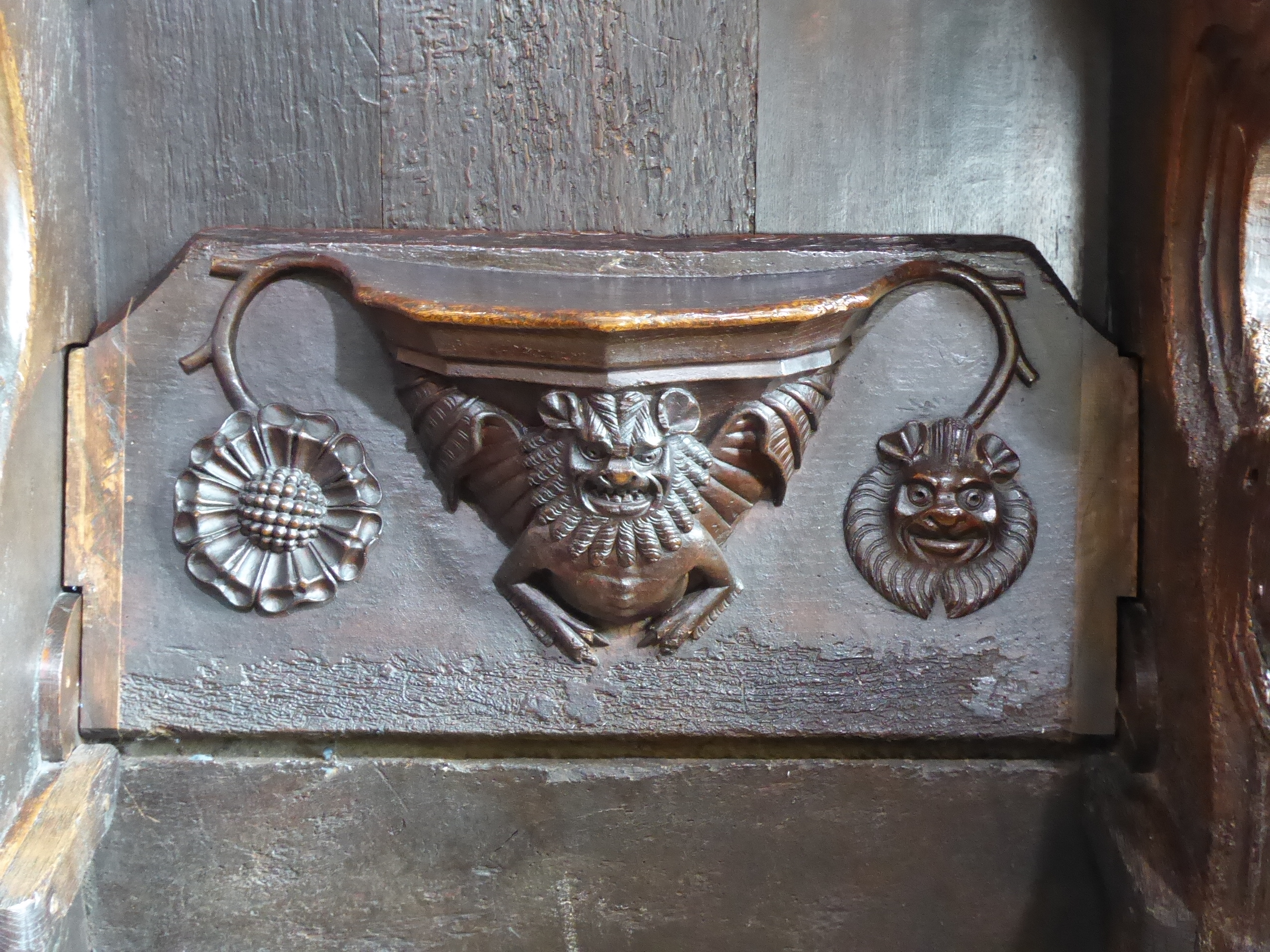. . . the long way! It was such a beautiful day that I just had to play truant. At first I intended going for a long walk from Grange now that the railway line has finally re-opened, but I remembered that I need to improve my cycling fitness so I switched to the bike.
Train to Cark, then Cartmel, where I found the priory church open and finally visited the interior after seeing the massive building so often from a distance. The 15th-century misericords are wonderful, and it’s interesting to see the style shift from Romanesque to Gothic as the chancel and transepts give way to the nave.
Then to High Newton and over Newton Fell, where I ate my sandwiches with a big view over the Winster valley. There were bluebells and wild garlic everywhere, and I realised how starved I have felt of the “incidentals” of sunshine, like shadows and slanting light. Then Witherslack and a coffee at the Derby Arms – where I realised that if I could cover four miles in 25 minutes (no guarantee: I’d been making heavy weather of cycling up to that point) I would catch the next train from Grange.
In the end I pulled into the station just as the train drew to a halt. I ran up the ramp and found myself right in front of the carriage door with the cycle logo. A satisfying end to a lovely day.



















































